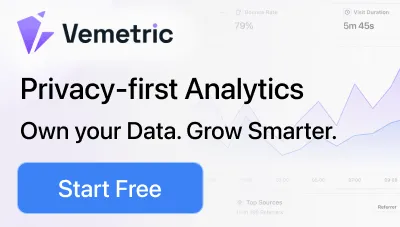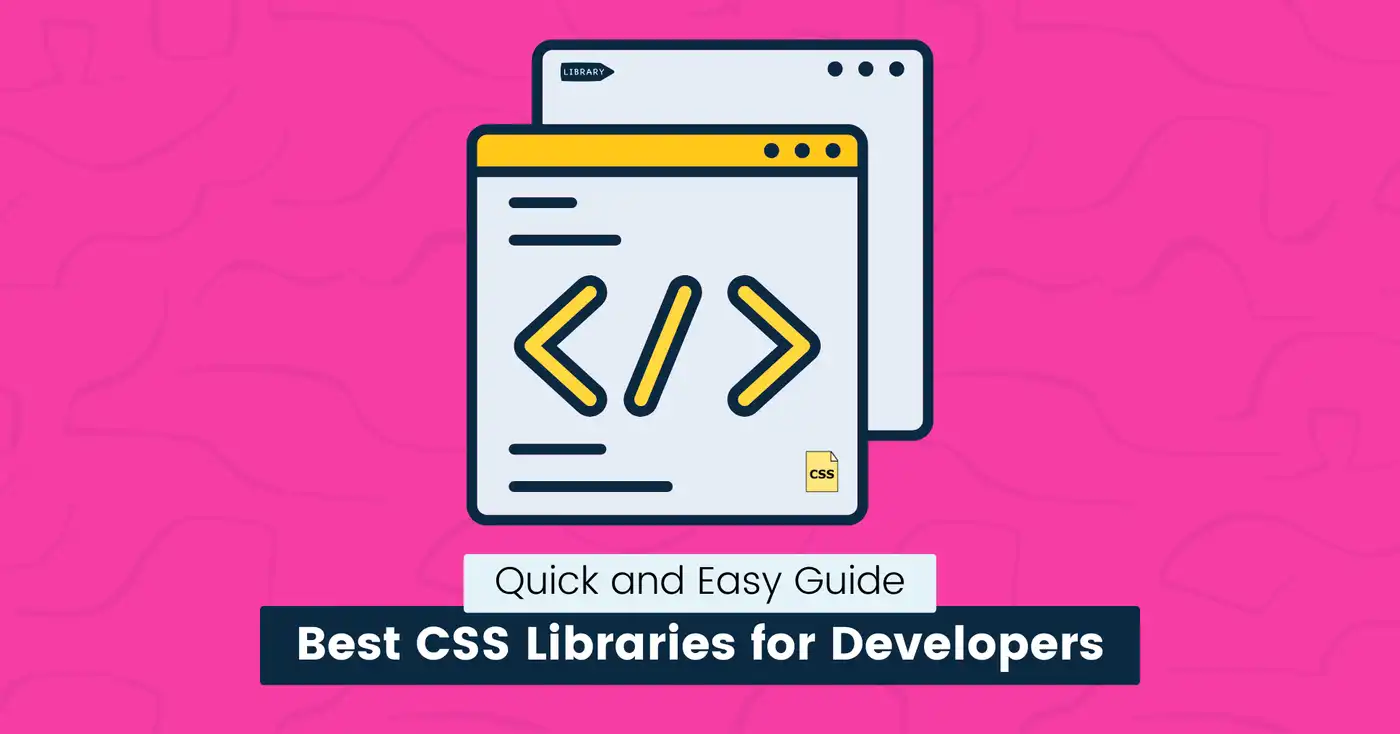
6 Best CSS Libraries for Developers (2024)
Have you ever tried writing CSS for a website from scratch?
As a developer, you want to create stunning websites with neat designs quickly.
However, manually coding CSS can be tough when there are endless styling options, especially with tight project deadlines.
It slows development, and you spend hours styling every element, only to have inconsistent style and a messy codebase.
CSS libraries can help you simplify this process and keep your designs clean and consistent.
This guide will provide you with the best CSS libraries and frameworks for speeding up your workflow without sacrificing quality.
Let’s get started.
What are CSS Libraries?
CSS libraries are a set of pre-written code that helps developers style websites quickly without starting from scratch.
They contain reusable styles or components for a website’s visual design, including layout, navigation, colors, fonts, or buttons.
Instead of writing custom CSS for every element, web developers and designers can use these libraries to apply consistent styles in just a few lines of code.
Here are some key features of these component libraries:
- Pre-built Components: These libraries have ready-to-use CSS styles and code snippets for standard UI elements like forms, navbars, buttons, accordions, etc.
- Customization Options: You can change the components and easily integrate them into your code to match your website’s specific look and feel.
- Responsive Design: Many CSS libraries work well on different screen sizes, automatically adjusting how things look on desktops, tablets, and mobile devices.
- Cross-Browser Compatibility: CSS libraries help create layouts that work consistently across different web browsers like Chrome, Firefox, and Safari. You can build professional websites without worrying about compatibility issues across different browsers.
Tip: Want to share your code with other developers? You can use Snappify to create beautiful code snippets with powerful design features.
snappify will help you to create
stunning presentations and videos.
Best CSS Libraries
Here’s a list of the top CSS libraries and frameworks you should use for a faster and easier development experience.
Tailwind CSS
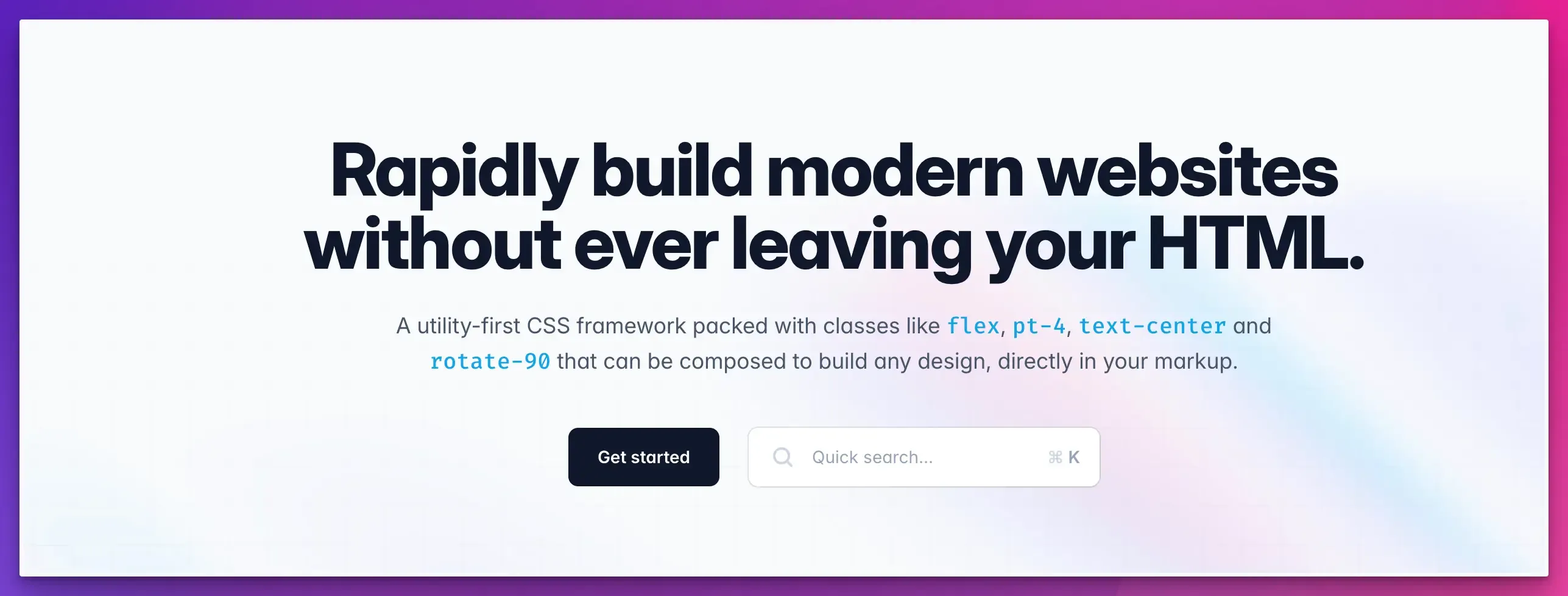
Tailwind is a utility-first CSS framework that allows developers to style UI elements by applying classes directly in the markup.
It is a popular CSS library that provides utility classes for designing your own components without writing custom CSS.
This gives developers a high degree of flexibility and control over web design.
Key Features:
- Tailwind provides a large set of utility classes for building complex components.
- It offers responsive breakpoints for easily creating mobile-friendly designs and responsive web pages.
- You can customize default styles through a tailwind.config.js configuration file to create your design system.
- Tailwind is lightweight and generates the smallest CSS file sizes (less than 10kB) for performance optimization.
- It supports multiple browsers, including Chrome, Firefox, Edge, and Safari.
- Used by over 11.2m developers.
- 290 contributors at GitHub.
Use Cases:
- Perfect for custom designs and quick prototyping of new ideas without writing extensive CSS.
- SaaS platforms and startups that need customized UI designs.
- Mobile-first web development.
Bootstrap
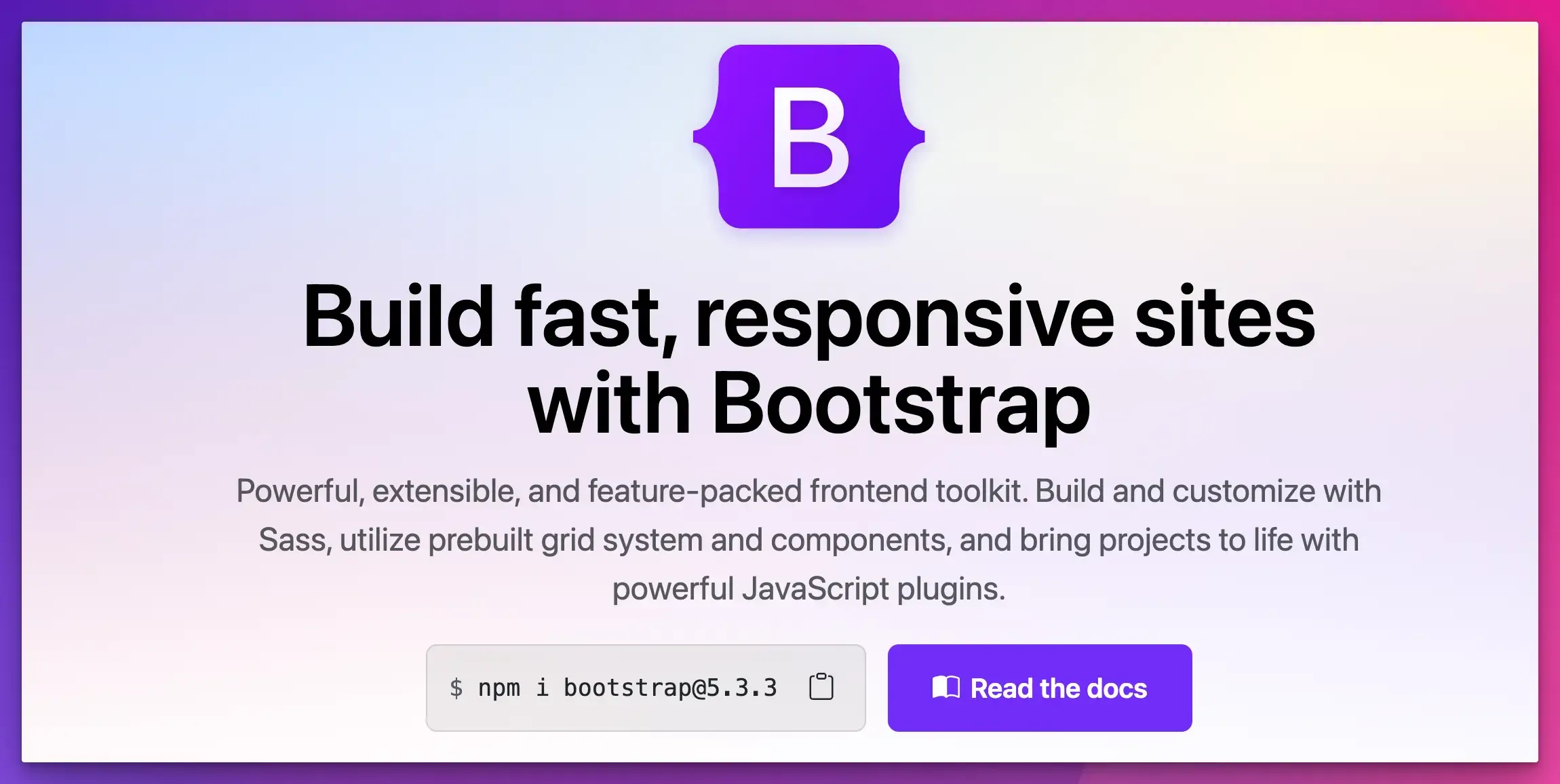
Bootstrap is a front-end CSS framework that provides pre-styled, responsive components for building modern websites.
It is the most popular open-source CSS framework that offers a responsive grid system for automatically adjusting layouts for different screen sizes, making it ideal for mobile-first development.
Key Features:
- Bootstrap offers many utility classes and a comprehensive library of ready-to-use components, layouts, UI elements, icons, and themes that you can use and modify as you like.
- It provides customizable flexibility with SASS integration, allowing developers to use only the CSS they need.
- It also includes JavaScript plugins for interactive features like dropdowns, modals, carousels, tooltips, and more.
- Used by over 5.9m developers.
- 1,395 contributors at GitHub.
Use Cases:
- Responsive web applications, landing pages, and business websites that need a consistent layout.
- Rapid prototyping for interactive designs.
Materialize
Materialize is a front-end framework based on Google’s Material Design.
It is a modern CSS library that combines classic design elements with interactive components, allowing developers to create stunning and consistent interfaces.
Key Features:
- It offers various components, such as badges, cards, buttons, breadcrumbs, navbars, forms, and more.
- It uses a 12-column, mobile-first responsive grid system that makes designing layouts that look great on any device easy.
- Materialize uses predefined color palettes, media queries, shadows, and depth effects based on the Material Design for a more consistent look.
- It also offers customizable SASS support to change the default styling.
- 260 contributors at GitHub.
Use Cases:
- Modern web applications and visually appealing dashboards.
- Corporate and business applications.
- Prototyping for fast application development.
Animate.css
Animate.css is a popular CSS animation library that provides ready-to-use cross-browser animations for web projects.
Its simple implementation and numerous animation options make it great for creating dynamic and visually appealing websites.
Key Features:
- It is lightweight, easy to use, and integrated into any project without significantly affecting page load times.
- Applying simple classes, you can make elements fade, bounce, slide, rotate, and more.
- It is very customizable and uses custom CSS variables to define duration, delay, and iterations of animate elements.
- Used by over 244k developers.
- 125 contributors at GitHub.
Use Cases:
- Add animations to interactive elements like buttons, forms, images, etc.
- Enhance page transitions or content loading to make the user experience smoother.
Styled-Components
Styled-Components is a CSS-in-JS library that allows developers to write CSS directly within JavaScript code.
It uses ES6 template literals to style components, making creating custom and dynamic styles in large projects easy.
Key Features:
- It allows you to style your React components directly, keeping styles and components in the same file to maintain consistency and modularity.
- Its flexible styling makes it useful for creating self-contained, reusable UI components.
- It automatically generates unique class names to avoid duplication or overlapping.
- Used by over 2.5m developers.
- 338 contributors at GitHub.
Use Cases:
- React component libraries and design systems.
- Dynamic user interfaces for complex applications.
Bulma
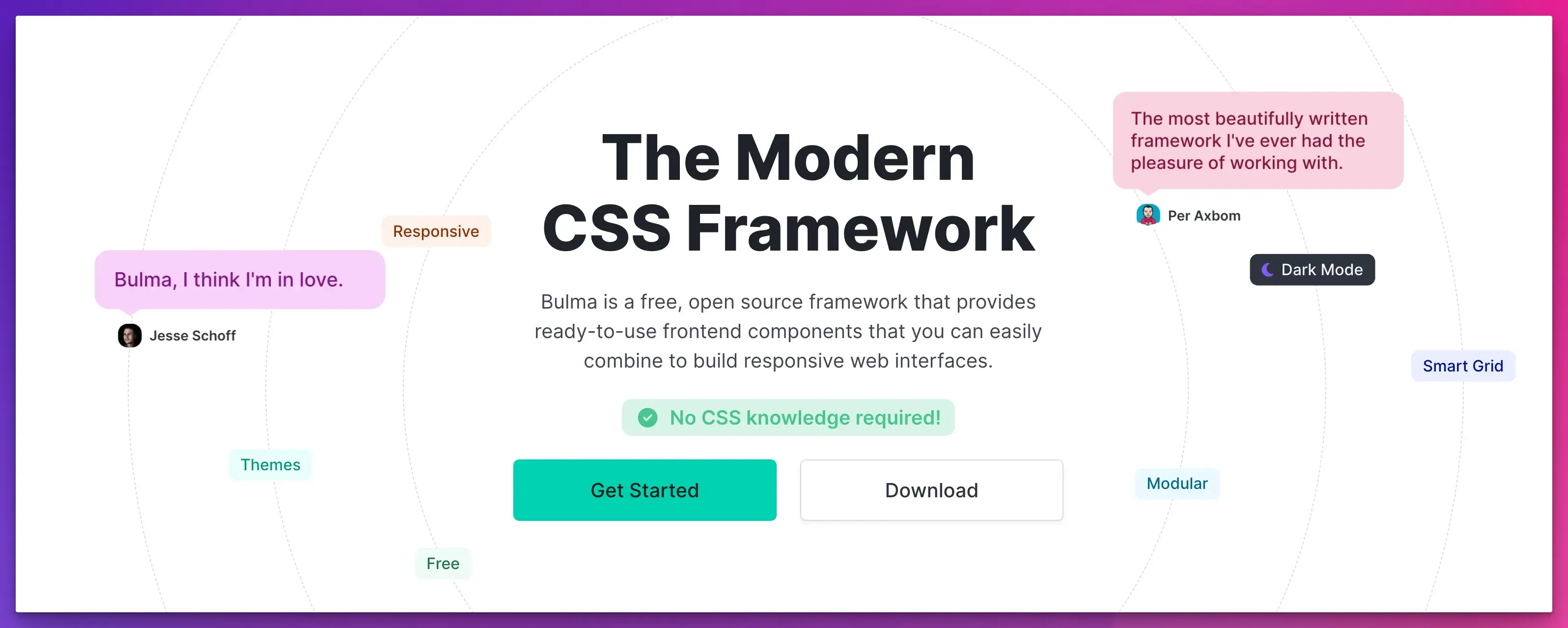
Bulma is a modern CSS framework that enables developers to build responsive web pages with ready-to-use front-end components.
It is an open-source and lightweight framework based on Flexbox and built with Sass, making it simple and modular to use.
Key Features:
- Responsive and modular design
- Easy to learn and use
- Consistent and intuitive syntax
- Large library of UI components
- Highly customizable
- Used by over 252k developers.
- 380 contributors at GitHub.
Use Cases:
- Building custom web applications and mobile-friendly websites
- Creating consistent user interfaces.
- Rapid prototyping and development
snappify will help you to create
stunning presentations and videos.
Final Words
Choosing the right CSS library can greatly improve your web development workflow. Consider your project’s specific needs and explore the documentation to make the best choice.
Further, you can also read the following guides:
FAQs
How do I choose the right CSS library for my project?
Consider your project needs, such as design style, complexity, and performance requirements. Also, check the library’s documentation, community support, and compatibility with other tools you plan to use.
Can I customize CSS libraries?
Yes, most CSS libraries allow customization. You can modify variables, override styles, or extend components to fit your design needs.
Are CSS libraries mobile-friendly?
Most modern CSS libraries are built with mobile responsiveness in mind, providing a range of tools to ensure your site looks good on all devices.
